Dr. Moses Mason
and His House
by Stanley
Russell Howe
With drawings by Sue Wight
Dr.
Moses Mason (1789-1866)
Agnes
Straw Mason (1793-1869)
Circa
1835 portraits
by Chester Harding
Dr. Moses Mason's
life spans a
particularly significant period of Bethel's history and
development.
Although he did not settle in the town until he was ten years old
(three years after incorporation
in 1796), he became its leading
citizen. Born in Dublin, New Hampshire, in 1789, the son of a
soldier of
the American Revolution and the fifth of eleven children, he began his
career in 1813 practicing medicine, having earlier apprenticed under
the guidance of his brother-in-law, Dr. James Ayer of Newfield,
Maine.
However, after 1832, business and
political pursuits claimed far more of
his attention than the healing arts.
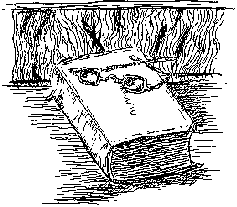
In 1815, he became the first
postmaster of Bethel,
serving in that capacity until 1833 when he departed for Washington,
D.C. Dr. Mason later admitted that not even the arrival of the
railroad
in 1851 could equal the excitement he felt when he heard the sound of
the postal rider's horn for the first time in 1815.
Dr. Mason's arrival in Washington as
a member of Maine's
eight-man delegation in the House of Representatives marked
the high point of his life. He was elected as a Jacksonian
Democrat
from the Second District (then made up of Oxford County, plus a few
towns in Cumberland,
Kennebec and Lincoln counties). The Doctor was re-elected in 1834
and
knew all his more illustrious contemporaries in Andrew Jackson's
Washington, including John C. Calhoun, Henry Clay and Daniel
Webster. In
fact, Dr. Mason was so proud of being in Congress that he collected the
autographs of all those who served with him, plus the signatures of
Presidents John Quincy Adams, Andrew Jackson and Martin Van
Buren. His autograph book and another with the autographs of Mrs.
Mason's associates have
survived and are in the collection of the Bethel Historical
Society.
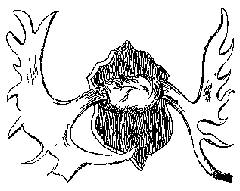
Prior to his Washington
experience, Dr. Mason had
served on the Board of County Commissioners from 1831 to 1833, and the
Bethel Board of Selectmen. Soon after he returned from Congress
in
1837, he again entered local and state affairs, becoming a member of
the
Governor's Executive Council (1843-1845) and a trustee of the State
Insane Hospital (1844), president of the Gould Academy Board of
Trustees (1854-1866) and a Selectman for several additional
terms. He
remained a Justice of the Peace from 1821 until his death in 1866,
marrying some forty-three couples and always returning the fee to the
bride.
The year after young Moses Mason came
to Bethel, the
population, according to the first federal census, numbered 616.
Most
of the settlement existed in the eastern part of town (East Parish)
where families were largely engaged in farming. On Bethel Hill
(West
Parish) there were few houses and little commerce until after the
arrival of the Atlantic and St. Lawrence Railroad, which passed through
as part of the Portland to Montreal Route in 1851. By the end of
Dr.
Mason's life, Bethel Hill had become the center of a town whose
inhabitants numbered over 2600.
Dr. Moses Mason brought many of the
rudiments of refinement to
the frontier inland Maine community. A Baptist, he also reflected
the
agrarian Democratic sentiment that dominated interior Maine through
most of the first half of the nineteenth century. Although he
could not
be classed as a learned man, he had access to more knowledge and wealth
(the latter derived from his business ventures in the neighboring
township named in his honor in 1843 and the holding of several thousand
acres of timberland) than his neighbors, and the circle of his
acquaintances was considerably greater. These fortunate
circumstances
enabled him to assume a rather patriarchal role in the town, exerting
an
influence upon nearly every Bethel development.
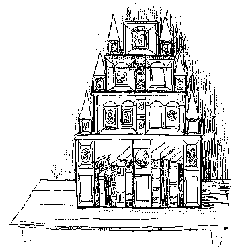
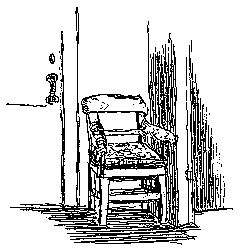
Dr.
Mason was a man of good taste, discerning eye, gregarious
temperament, sterling honesty and unusual wisdom. He was
always fond of collecting statistics and facts relating to the
town. Very adept in mechanical ways as well, he built his own
carriage, a
pictorial bookcase, and a moose antler chair; the latter two can be
seen
in the house today. Always interested in the material progress of
the
town, he supported many projects designed to enhance these ends.
In
cooperation with F. O. J. Smith of Portland and others, he proposed and
planned an extension of the Cumberland and Oxford Canal by diverting
the waters of the Androscoggin down to meet Sebago Lake. This
project
did not succeed, as the railroad came to Bethel about this time and Dr.
Mason's plan went unfilled—the only noteworthy failure in a life so
rich with success.
In June of 1813, he had married Agnes
Straw of Newfield, and she came to Bethel six months later by
sleigh. The couple
subsequently
moved into a white clapboard house gracing the east side of the
common. The fourth dwelling to be built in the vicinity, it was
certainly the most elegant, standing two stories with a graceful
entrance doorway complete with fanlight and side windows. The
delicacy
of the Federal style was soon modified by dark shutters, double in
front and
single on the ell.
According to Dr. Nathaniel T. True,
Bethel's eminent historian,
Dr. Mason's house was the first residence on the Common to be
painted white, the first on a high granite foundation and the first
with
shutters.
Early in its construction, some of the leading citizens, seeing the
sills blocked so high, chose a committee to prevail upon the Doctor to
lower them, thinking the building would, in their opinion, blow
over.
But Dr.
Mason was not dissuaded, and construction proceeded as planned.
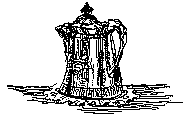
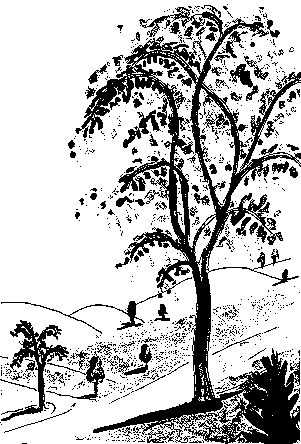
The
front portion of the house is a single room in depth and
contains a parlor and dining room downstairs, and two bedroom chambers
above, divided by a full depth hall, upstairs and down, with a formal
stairway. It is in the hall that the most intriguing feature of
the
house is found, for the walls are decorated with "Rufus Porter School"
murals depicting
distant seascapes and engaging landscapes with lush foliage; these
unique works of art were likely painted by the itinerant
artist Jonathan D. Poor, a nephew of Rufus Porter. The
murals are unique in Bethel and have been the
subject
of much
attention through the years. They remain in a state of
preservation
that belies their years, and required only a careful cleaning and
slight repair during the restoration of the building in
1972-1973. Jean
Lipman has written of them in her book,
Rufus Porter: Yankee Pioneer,
published in 1968.
Visitors to the Moses Mason House will
appreciate the unobtrusive manner in which the renovation and
restoration has been
carried out. The house has been adapted to present amenities, but
in
ways that preserve its authentic character. Interior colors
were
selected after laboratory analysis of paint samples to determine the
color schemes chosen by Dr. Moses Mason and his bride in 1813.
In
each room a patch has been left to reveal the original color.
The furnishings in the house are
appropriate to the period of the Masons' lives and have been acquired
by many generous
donations and bequests. The attached barn, once used by Dr. Mason
for farm animals and hay storage and by later
residents as a workshop, now houses a
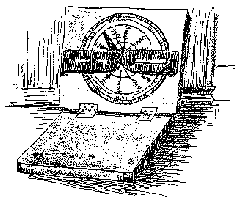
meeting room/exhibit hall and modern kitchen on
the first floor and the Historical Society's Research Library on the
second.
Any account dealing with the Moses
Mason House would
be incomplete without mention of the later owners of the
property. Dr.
and Mrs. Mason, having no children of their own, willed their home to a
favorite niece, Cyrene S. Ayer, who married Daniel Twitchell and
occupied the premises. After Mr. Twitchell's death, she married
O. C.
Littlehale. Cyrene Littlehale's daughter by her first marriage,
Ada,
succeeded to her mother's house and lived there for many years with her
husband, Tristram Durell. Their only child, Daniel, and his wife,
Ada
Everett, were the fourth and last family to make their home there.
In 1972 the property was purchased by the William Bingham II
Trust for Charity. Through the generosity of the Bingham
trustees, the Moses Mason House was brought to its present restored
state, and in January of 1974, the title for the property passed to the
Bethel Historical Society. The facility now contains a house
museum, the Society's extensive library collections, and space for
lectures and short-term exhibitions. This is a fitting tribute to
Dr. Mason, whose long life and many
activities contributed to the evolution of Bethel as a town and Maine
as a state, and to the Durells, who through their long occupancy of the
House, held back the tide of modernization and preserved the murals and
other irreplaceable features. The Moses Mason House is on
the National Register in its
own right, as well as part of the Broad
Street Historic District.
Dr.
Moses Mason and His House was originally published as a booklet
in 1981 by the Bethel Historical Society.
It has been slightly edited and updated for presentation here.
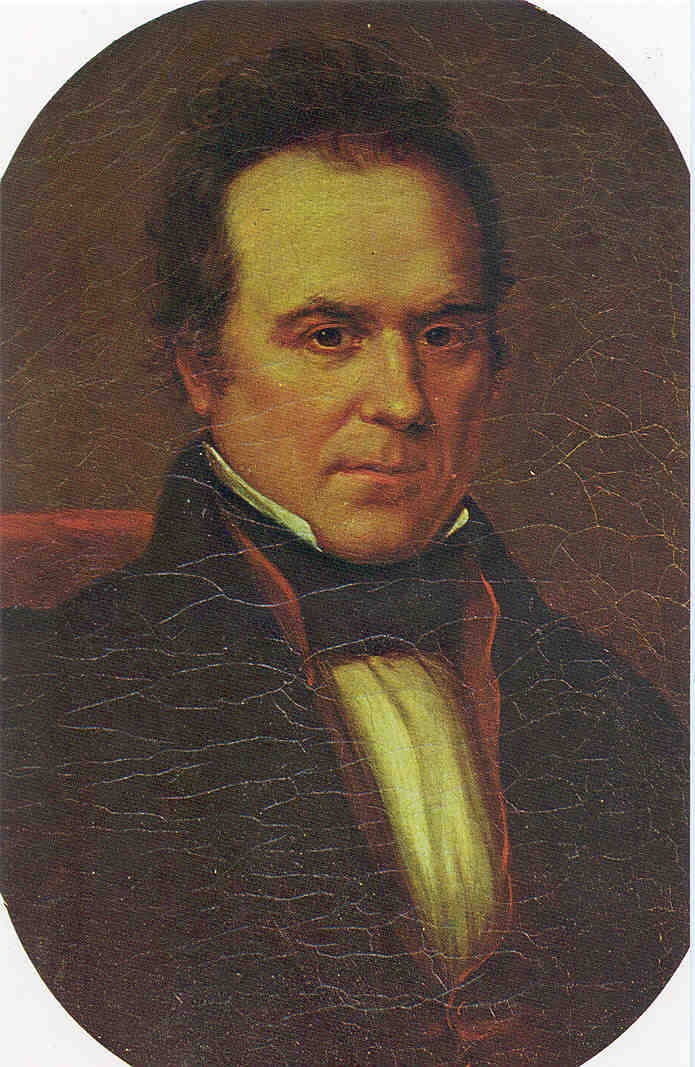
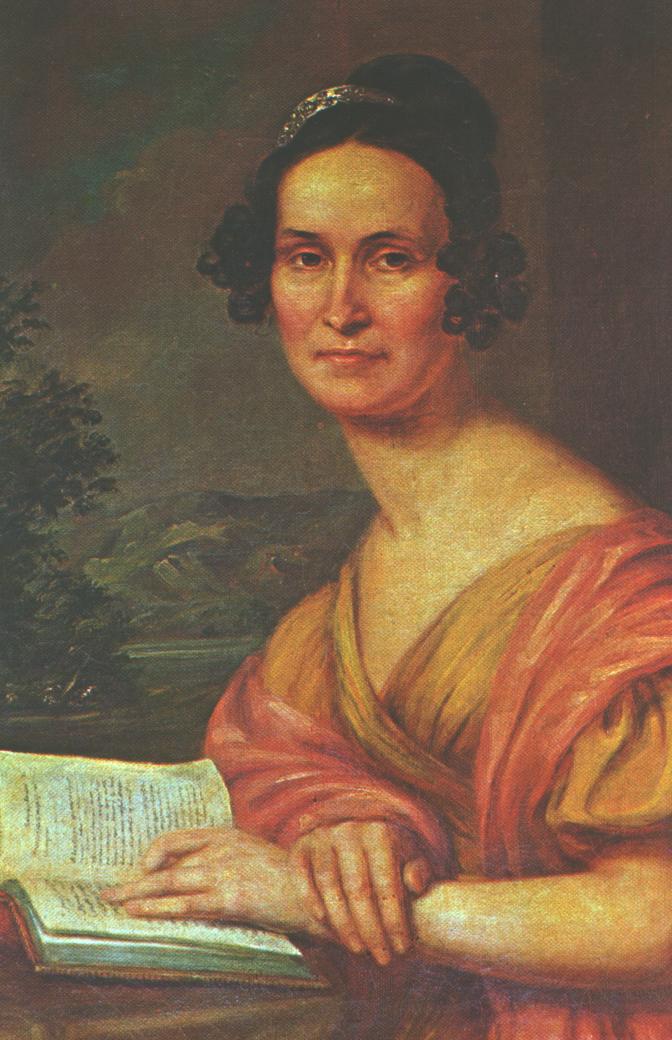



 Prior to his Washington
experience, Dr. Mason had
served on the Board of County Commissioners from 1831 to 1833, and the
Bethel Board of Selectmen. Soon after he returned from Congress
in
1837, he again entered local and state affairs, becoming a member of
the
Governor's Executive Council (1843-1845) and a trustee of the State
Insane Hospital (1844), president of the Gould Academy Board of
Trustees (1854-1866) and a Selectman for several additional
terms. He
remained a Justice of the Peace from 1821 until his death in 1866,
marrying some forty-three couples and always returning the fee to the
bride.
Prior to his Washington
experience, Dr. Mason had
served on the Board of County Commissioners from 1831 to 1833, and the
Bethel Board of Selectmen. Soon after he returned from Congress
in
1837, he again entered local and state affairs, becoming a member of
the
Governor's Executive Council (1843-1845) and a trustee of the State
Insane Hospital (1844), president of the Gould Academy Board of
Trustees (1854-1866) and a Selectman for several additional
terms. He
remained a Justice of the Peace from 1821 until his death in 1866,
marrying some forty-three couples and always returning the fee to the
bride.
 Dr.
Mason was a man of good taste, discerning eye, gregarious
temperament, sterling honesty and unusual wisdom. He was
always fond of collecting statistics and facts relating to the
town. Very adept in mechanical ways as well, he built his own
carriage, a
pictorial bookcase, and a moose antler chair; the latter two can be
seen
in the house today. Always interested in the material progress of
the
town, he supported many projects designed to enhance these ends.
In
cooperation with F. O. J. Smith of Portland and others, he proposed and
planned an extension of the Cumberland and Oxford Canal by diverting
the waters of the Androscoggin down to meet Sebago Lake. This
project
did not succeed, as the railroad came to Bethel about this time and Dr.
Mason's plan went unfilled—the only noteworthy failure in a life so
rich with success.
Dr.
Mason was a man of good taste, discerning eye, gregarious
temperament, sterling honesty and unusual wisdom. He was
always fond of collecting statistics and facts relating to the
town. Very adept in mechanical ways as well, he built his own
carriage, a
pictorial bookcase, and a moose antler chair; the latter two can be
seen
in the house today. Always interested in the material progress of
the
town, he supported many projects designed to enhance these ends.
In
cooperation with F. O. J. Smith of Portland and others, he proposed and
planned an extension of the Cumberland and Oxford Canal by diverting
the waters of the Androscoggin down to meet Sebago Lake. This
project
did not succeed, as the railroad came to Bethel about this time and Dr.
Mason's plan went unfilled—the only noteworthy failure in a life so
rich with success.
 The
front portion of the house is a single room in depth and
contains a parlor and dining room downstairs, and two bedroom chambers
above, divided by a full depth hall, upstairs and down, with a formal
stairway. It is in the hall that the most intriguing feature of
the
house is found, for the walls are decorated with "Rufus Porter School"
murals depicting
distant seascapes and engaging landscapes with lush foliage; these
unique works of art were likely painted by the itinerant
artist Jonathan D. Poor, a nephew of Rufus Porter. The
murals are unique in Bethel and have been the
subject
of much
attention through the years. They remain in a state of
preservation
that belies their years, and required only a careful cleaning and
slight repair during the restoration of the building in
1972-1973. Jean
Lipman has written of them in her book, Rufus Porter: Yankee Pioneer,
published in 1968.
The
front portion of the house is a single room in depth and
contains a parlor and dining room downstairs, and two bedroom chambers
above, divided by a full depth hall, upstairs and down, with a formal
stairway. It is in the hall that the most intriguing feature of
the
house is found, for the walls are decorated with "Rufus Porter School"
murals depicting
distant seascapes and engaging landscapes with lush foliage; these
unique works of art were likely painted by the itinerant
artist Jonathan D. Poor, a nephew of Rufus Porter. The
murals are unique in Bethel and have been the
subject
of much
attention through the years. They remain in a state of
preservation
that belies their years, and required only a careful cleaning and
slight repair during the restoration of the building in
1972-1973. Jean
Lipman has written of them in her book, Rufus Porter: Yankee Pioneer,
published in 1968. meeting room/exhibit hall and modern kitchen on
the first floor and the Historical Society's Research Library on the
second.
meeting room/exhibit hall and modern kitchen on
the first floor and the Historical Society's Research Library on the
second.